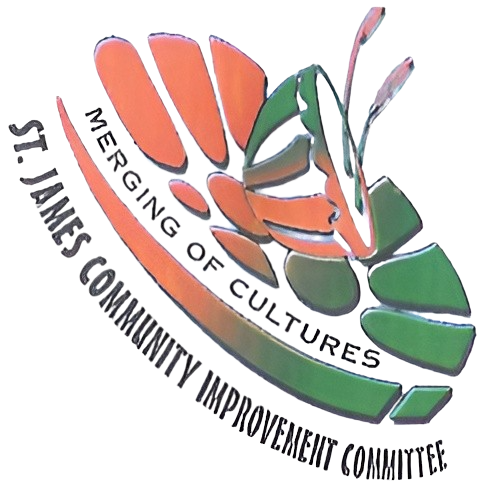St. James became part of the city of Port of Spain in 1938. Until 1992, the Civil Aviation Training Centre (CATC), now a unit of the Trinidad and Tobago Civil Aviation Authority, was located along Long Circular Road in St. James. Originally known as the Peru Estate, St. James was a sugar cane estate that harboured some of the first East Indian indentured settlers who travelled by ships like the Fatel Razak and SS Ganges from Uttar Pradesh via Kolkata.
Bounded by Woodbrook and the Maraval River on the East and the community of Cocorite on the West, St. James has been a commmunity with a large percentage of its population with roots in India. It is believed that, beginning in 1845, indentured laborers from India who were contracted to work on the plantations in St. James set up residence in areas close to their work, upon completion of their terms of indenture. The East Indians of St. James brought many of their customs with them, including the Hindu celebration of Divali and the Muslim observance of Hosay. In 2000, more than 150 years after the migration of muslims from India, St. James continued to be the centre of Hosay observances in Trinidad. The East Indian influence in St. James is also reflected in the streets, several of which bear the names of places in India: Agra; Baroda; Benares; Bengal; Bombay (Mumbai); Calcutta (Kolkata); Cawnpore; Delhi; Hyderabad; Lucknow; Madras; Nepaul; Nizam; and Patna. St. James was incorporated into the city of Port-of-Spain in 1938.
In the early part of the 20th century, many of St. James' Hindus converted to catholicism and some took on English surnames (such as Joseph) in the process. They were married in the Catholic church and their offspring attended catholic elementary schools. One of the most well-known sextons of the Catholic church who facilitated this conversion was an Afro-Trinidadian man who was known in the community as "Tall" Joseph.
St. James had two zoos at one time for the viewing pleasure of its residents. The Police Force maintained its barracks at the corner of Long Circular and Western Main Roads where its canine and equestrian corps were trained. In the 1950s, 7-Up soft drinks were bottled on Long Circular Road close to the Western Main Road. The dead were buried at Mucurapo Cemetery but, in the 1970s when burial space became scarce, a cinerary was installed on Long Circular Road. The infamous "hangman's cemetery" was located on George Cabral Street and was the place where criminals sentenced to death were buried, after their hanging at the Royal Jail on Frederick Street, Port-of-Spain.
St. James was the place where literary giant Vidia Naipaul grew up and his home at 26 Nepaul Street was the subject of his most successful book: "The House for Mr. Biswas." He was awarded the Nobel prize for literature in 2001. His brother, Shiva Naipaul, who also grew up in St. James, achieved some literary notoriety before his death at a very young age. Renown singer and rapper Nicki Minaj was born in St. James.
